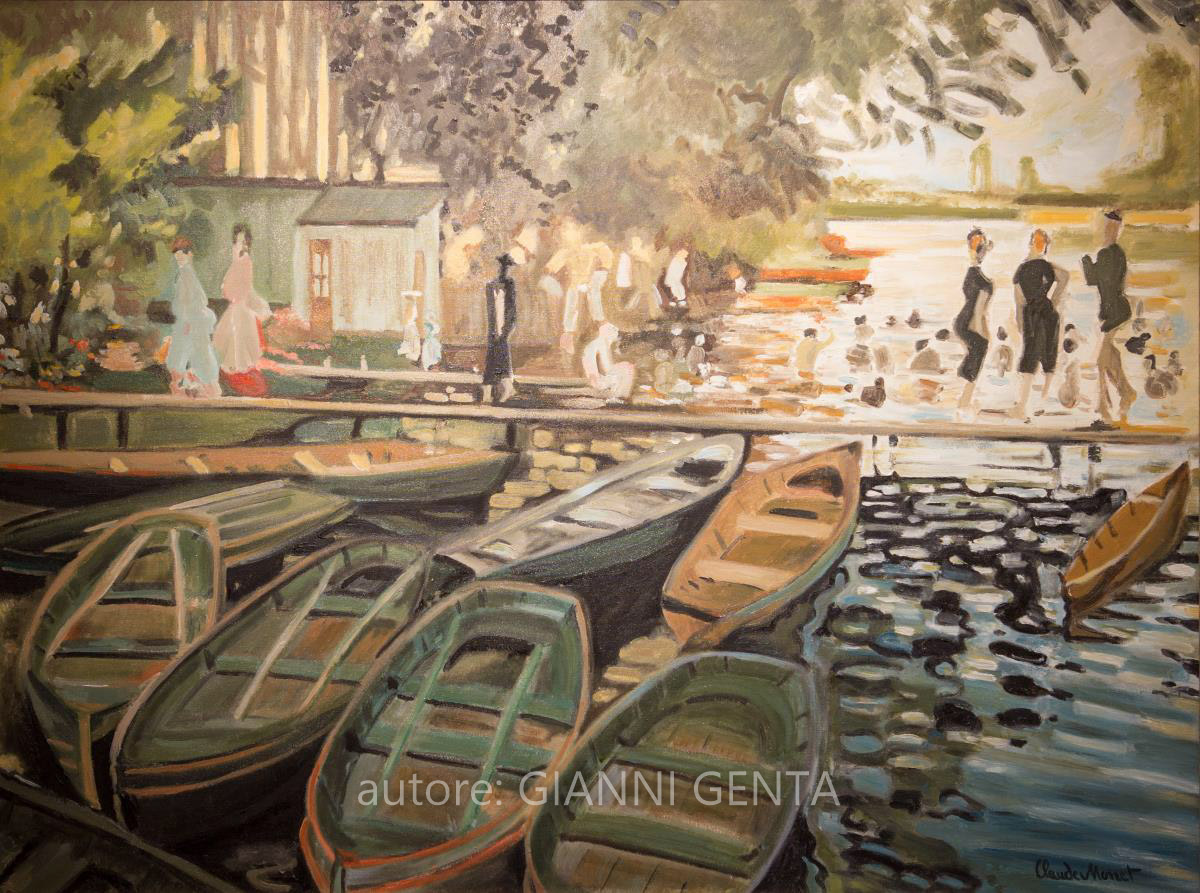Bagnanti alla Grenouillère
by Monet
Weters at La Grenouillère is a Claude Monet oil painting on canvas (73×92 cm) dated 1869 and kept in the National Gallery of London.
HISTORY
In the sixties of the nineteenth century, Monet was a painter, but with radical ideas who, with a group of friends, gave birth to a painting that soon converts into the impressionist current.
His artistic poetry was eager to portray the instant in the daily life, working outdoors in places loved by the small bourgeoisie of which he belonged, as at the gathering of the Grenouillère, where he was bathing in the waters of the Seine. Such a place was called “funnel pond” for the presence of women of easy habits that adore Parisian visitors and were popularly nicknamed “frogs” (Grenouilles). Here, the artist, who in summer 1869 spent his summer vacations, placed his stand with the intention of drawing a sketch for a larger work, then unsuccessfully presented at Salondel in 1870 and subsequently lost.
What had to be the sketch, now at the National Gallery, was then signed to be sold and earn some money: it is part of the group of the first impressionist paintings. The X-rays showed that the work required more than one session, with some repentance: the work was suspended and restarted by flipping the canvas. In addition, the artist corrected, probably in his studio, the position of some boats. The spirit of the right “impression” therefore required a long work before being captured satisfactorily.
That same year, Grenouillère worked with other Monet’s friends, including Renoir (painted La Grenouillère today in Stockholm). The work entered the London Museum in 1979.
DESCRIPTION
On the Shadowy Shores of the Seine, the artist painted some wooden boats moored near a couple of piers. To the left some women with colored and accented dresses represent two ladies “for good”, who went to such a place to converse, look and watch. To the left a man wearing a jacket and hat is approached by two women in a swimsuit, careful not to be seen so dressed in a public place visited by men. They are probably trying a loving approach, as it would seem to suggest the flattering pose of one of them leaning with a hand on their hips.
These figures are on a long pier that led to an islet and a floating bar, as seen in a painting by the artist at the Metropolitan Museum. Behind it some fast brush strokes indicate a group of heads, perhaps a swimming lesson.
It strikes the contrast between the light areas at the sides and the dark boats in the foreground at the center, which occupy a good third of the canvas. To the left, the light invests a tree from the thick broom, to the right it is reflected in the water, with the process, which has become typical, to use quick and informal brushstrokes, to give the painting a more spontaneous character than the academic conventions use. To do this, the artist had some recent technical innovations, such as flat and square brushes that were held firmly by the metal ring.
This post is also available in:
 Italiano
Italiano



